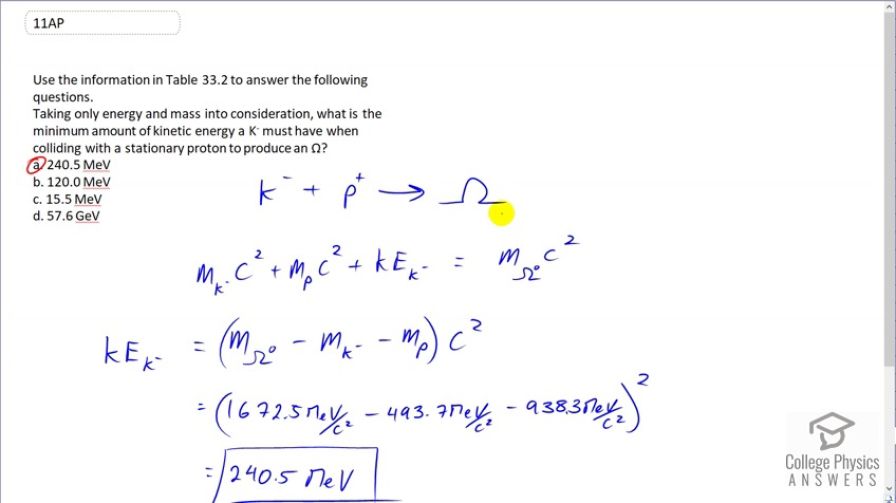Question
Use the information in Table 33.2 to answer the following questions.
Taking only energy and mass into consideration, what is the minimum amount of kinetic energy a must have when colliding with a stationary proton to produce an ?
- 240.5 MeV
- 120.0 MeV
- 15.5 MeV
- 57.6 GeV
Final Answer
(a)
Solution video
OpenStax College Physics for AP® Courses, Chapter 33, Problem 11 (Test Prep for AP® Courses)

vote with a rating of
votes with an average rating of
.
Calculator Screenshots
Video Transcript
This is College Physics Answers with Shaun Dychko. The kappa minus particle is going to be colliding with a stationary proton creating an omega particle and the total mass of these two particles is less than the mass of the omega and so this reaction will not happen spontaneously but it will happen if enough energy is given to the kappa particle in order to compensate for the insufficient combined mass of these two particles. So the question is how much energy does it need? So it will be as much energy as needed so that the total of the mass energy of the proton plus the rest mass energy of the kappa particle plus the kinetic energy of the kappa particle all that those three things have to equal the rest mass energy of the omega particle. So that's what we say here; rest mass energy of the kappa minus particle, rest mass energy of the proton, plus the kinetic energy of the kappa minus particle equals the rest mass energy of the omega particle. So we need to solve for kinetic energy and we subtract both these terms from both sides to do that and then factor out the c squared and then we look up these values in a data table [33.2] and there is no entry in that table for the omega zero particle but we'll assume it's the same mass as the omega minus and the omega plus. And so we have 1672.5 megaelectron volts per c squared minus the kappa minus particle mass minus the proton mass giving 240.5 megaelectron volts is the amount of energy that we need to give to the kappa minus particle in the form of kinetic energy in order for this reaction to occur.
